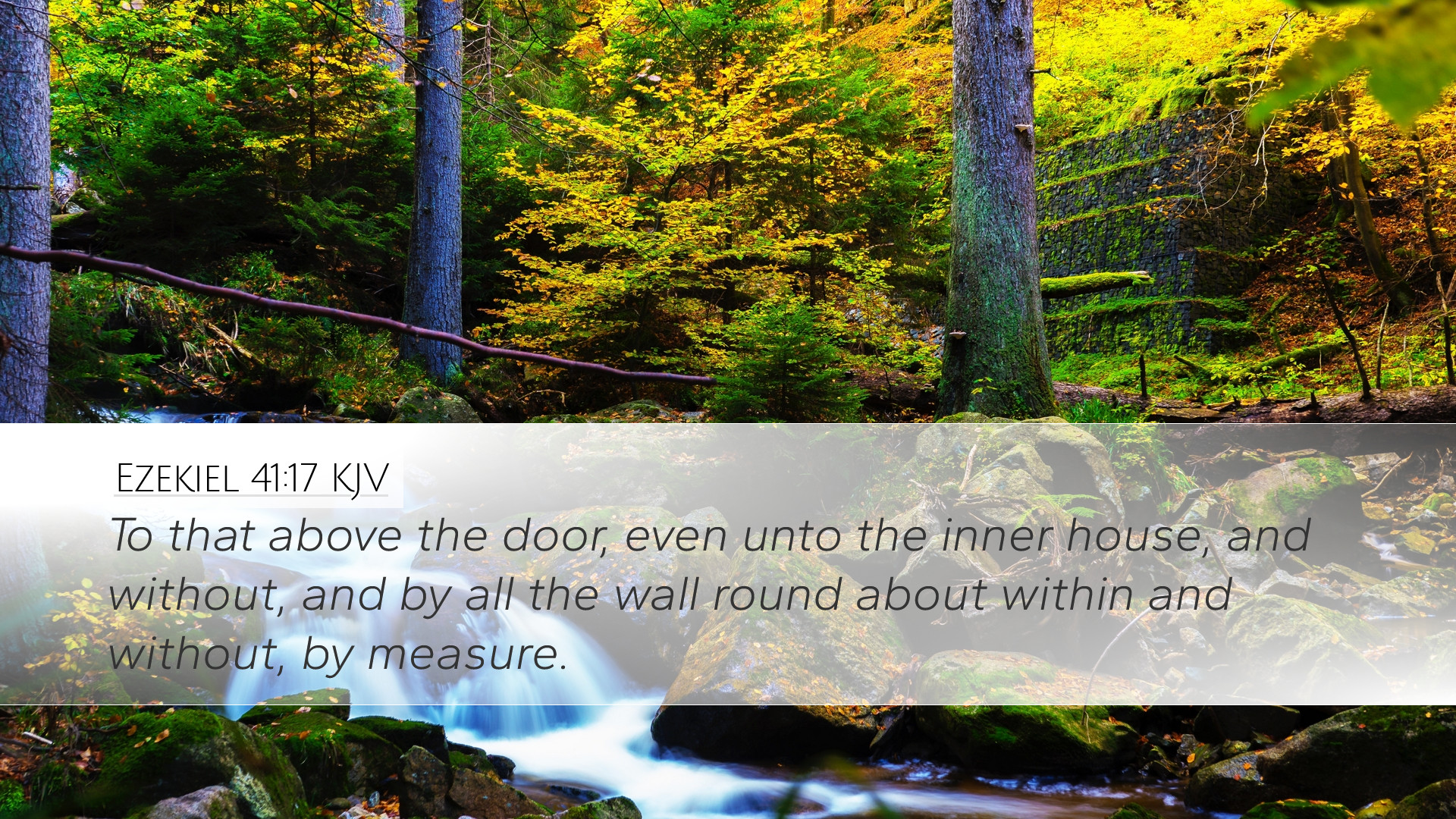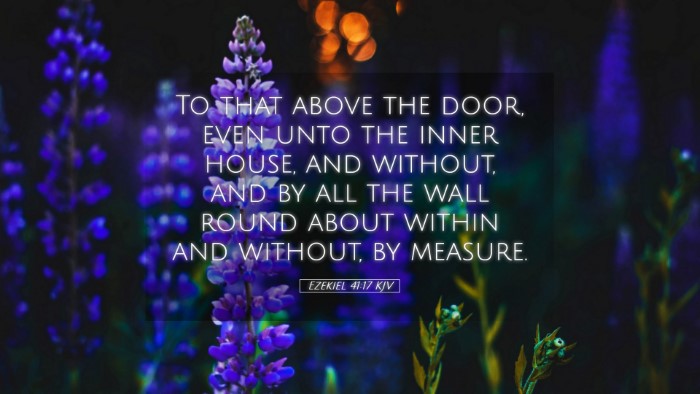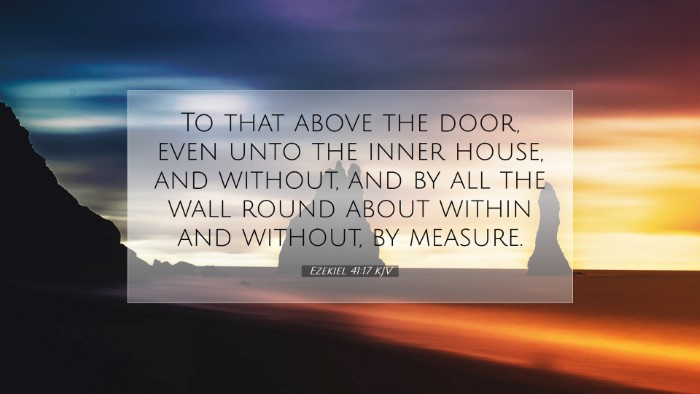Bible Commentary on Ezekiel 41:17
Bible Verse: Ezekiel 41:17 - "The space between the cherubim and the wall, to the altar, was a cubit on this side and a cubit on that side: the little chambers were six cubits on this side and six cubits on that side."
Contextual Overview
The book of Ezekiel is a prophetic work that reflects the experiences and revelations given to the prophet Ezekiel during the Babylonian exile. Chapter 41 specifically focuses on the detailed vision of the temple and its layout, emphasizing the holiness and order of God’s dwelling place among His people.
Structural Analysis
This verse is situated amidst a larger vision concerning the measurements and design of the new temple. The specifications provided are not merely architectural; they serve a liturgical purpose, highlighting the relationship between God, His people, and the spaces designated for worship.
Space Between the Cherubim
The mention of the cherubim is significant. They are depicted consistently throughout Scripture as guardians of God’s presence. Their role underscores the sacredness of the temple space and the need for reverence in approaching God.
Measurements and Symbolism
The specific cubit measurements carry symbolic weight. The number six often symbolizes human imperfection in Scripture, relating to humanity's need for redemption and the presence of divine grace. The duality of the spatial measurements ("this side" and "that side") may also indicate balance and symmetry, conveying a sense of order that reflects God's character.
Theological Reflections
Ezekiel 41:17 invites us to consider the nature of God's holiness and how it intersects with human worship. The meticulous details regarding God’s house serve to remind us of His transcendence and immanence.
God’s Holiness
The cherubim’s presence denotes God’s holiness and the sacredness of the worship space. As noted by Matthew Henry, "the approaches to God must be marked by an awareness of His holiness." This encourages a solemnity and seriousness in worship, reminding believers that they are entering into the presence of the Holy One.
Access to God
The layout given through Ezekiel was meant to reflect both access to God and the boundaries that must be respected. Albert Barnes comments on how these restrictions symbolize the need for purity in worship—God’s presence is accessible, but only in the ways He has prescribed.
Practical Applications
-
Worship with Reverence: The emphasis on measurements and sacred spaces prompts pastors and worship leaders to cultivate environments of reverence and respect during worship services.
-
Understanding God’s Presence: The study of temple architecture can enrich theological education, helping students and theologians grasp the significance of physical spaces in relation to spiritual experiences.
-
Liturgy and Worship Design: The ordered design of the temple encourages worship practitioners to think critically about how spaces influence liturgical practices and congregational engagement with the Divine.
-
Balance in Ministry: Reflecting on the dual measurements (cubits on this side and that) can inspire a balanced ministry approach—integrating both the physical and spiritual needs of the congregation.
Conclusion
Ezekiel 41:17 serves as a reminder of the intricate relationship between God's holiness and human worship practice. Through careful observation of the text, scholars and believers alike can discern the ongoing relevance of these ancient measurements in shaping contemporary worship and understanding the nature of God's presence among His people. By embracing the lessons from this verse, the church can better appreciate the call to worship in holiness and truth, drawing nearer to God with both awe and love.


